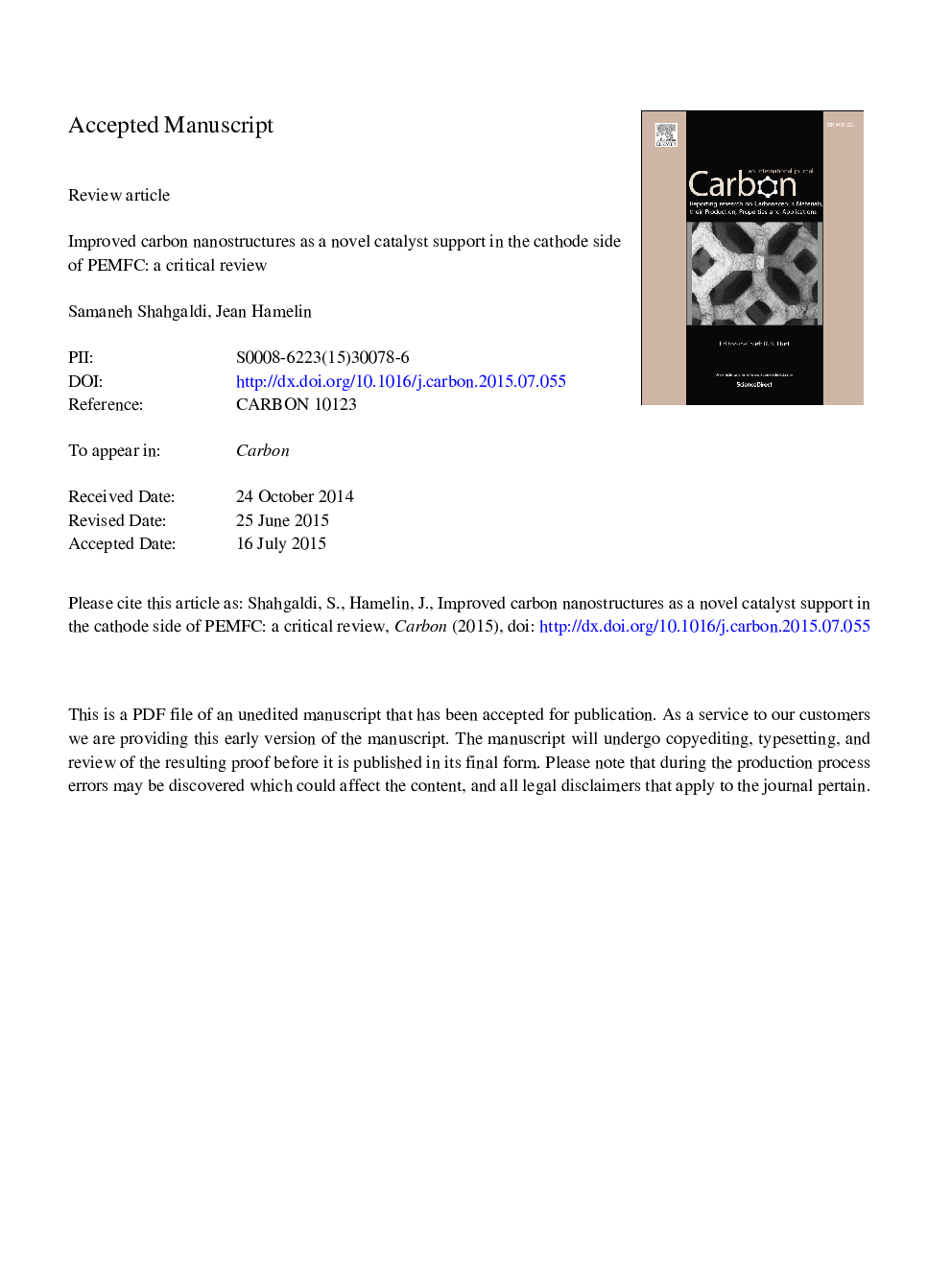| Article ID | Journal | Published Year | Pages | File Type |
|---|---|---|---|---|
| 7851044 | Carbon | 2015 | 82 Pages |
Abstract
Carbon supported platinum nanoparticles are extensively used as electrocatalysts in proton exchange membrane fuel cells (PEMFCs). The stability and performance of the electrocatalyst strongly depends on the deposition method and properties of the carbon support. Carbon black is commonly used as support for platinum (Pt-C) due to its low cost and high availability, good electrical performance, and relatively high surface area. However, carbon corrosion, Ostwald ripening, and Pt dissolution have been recognized as the main cause for low durability of this electrocatalyst under high potential conditions. As a result, the necessity for promising supports with higher stability is inevitable. It has been reported that carbon nanomaterials with higher mesoporosity, surface area, electrical conductivity, stability and suitable anchoring site are promising supports under harsh oxidizing condition of PEMFCs. This review is devoted to the development of recent advances in novel carbon nanomaterials as catalyst support, such as carbon nanotubes, carbon nanofibers, graphene, mesoporous carbon, and etc., for the oxygen reduction reaction (ORR) in PEMFCs. Moreover, the main challenges such as low activity, poor durability, and high cost, are addressed and discussed. The performance and obstacles of these carbons associated with different metal catalyst deposition methods are highlighted.
Related Topics
Physical Sciences and Engineering
Energy
Energy (General)
Authors
Samaneh Shahgaldi, Jean Hamelin,
